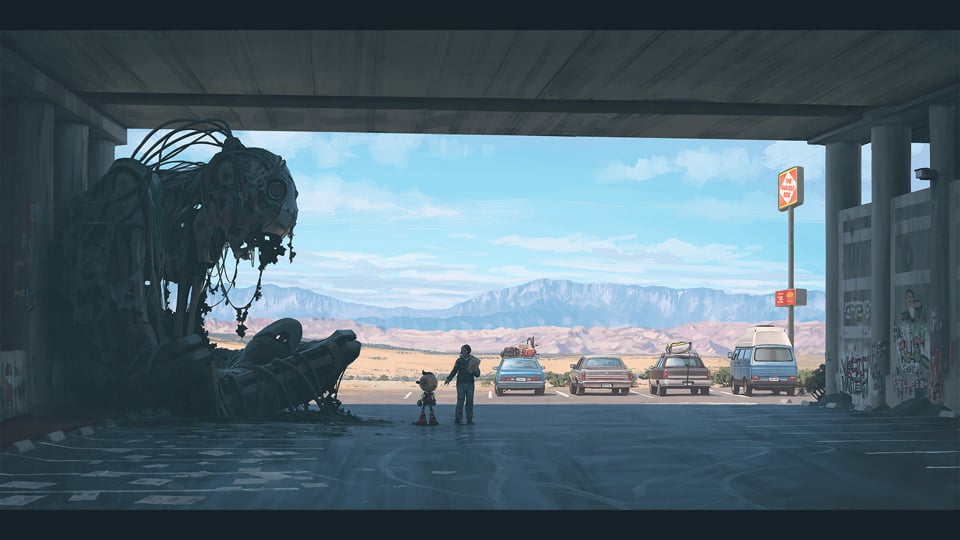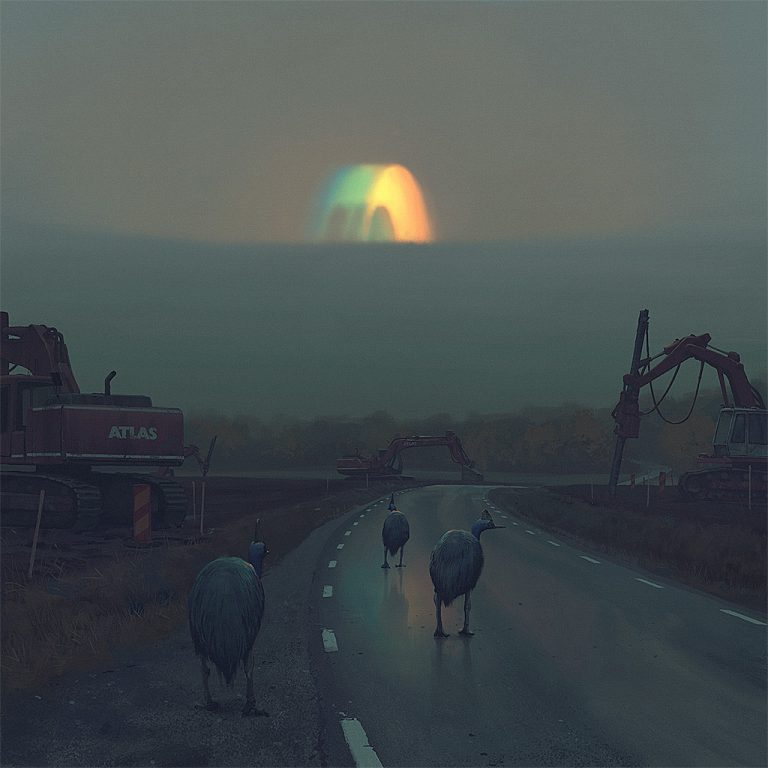
But State is a departure in that here - in his America, in his version of our particular sick and sweaty dream of the future - the man and the machine are one. He’s got a knack for the slick sheen of biopunk grossness - all tendrils and weird fluids - and the consequent juxtaposition of humans and the machines they have made. He’s always had a hacker’s eye for kludging together old technology and new amid a rat’s nest of cables and blinky lights. He’s always done decay well, and abandonment. …/ Stålenhag’s art has always been jarring, with its combination of dull suburban tract houses, Brutalist apartment blocks, boxy economy cars and the sleek lines of pure sci-fi machinery. His vision of an alternate post-war, post-drought, post-human 1997 in the desert West and California. But The Electric State is Stålenhag’s American book. His Swedish books read joyous when they were happy, bittersweet (but rarely sorrowful) when they were not, and adventurous in between.
Simon stalenhag electric state full#
…/ Where Tales and Things had an innocence to them - a sense of wildness and freedom in their structure as visual memoirs of a kid growing up in the shadow of a looming, strange future full of inexplicable machines and utopian science gone wrong - State does not. His art (photorealistic, washed out, laced in neon or icicles, nostalgic and futuristic both at the same time) gets into my eyes and stays there. …/ The stories crawl into my brain and mess with my memory of history, time and place.

“Most of the time, when I read a Simon Stålenhag book, I spend days scanning the trees around my house, looking for a shudder in the leaves for the hump of a giant robot rising over the treeline, just beginning to stand. In this manner, The Electric State becomes a classic epos, but at the same time also a bildungsroman told in retrospect.” A lonely girl who plays a bigger role than she knows, on her way through an unforgiving wasteland. Piece by piece, the world, the plot and the protagonist emerge from the short texts that accompany the artworks. …/ Stålenhag is a master of the art of telling a story in fragments. Be sure not to miss the part of the plot that only plays out in the images, either, inserted into a narrative by a foreign voice recalling memories about the world and the war. But it is the story in pictures and words, the symbiotic relationship between the two, that captivates the reader from start till finish. A feeling of being watched and an ever-present uneasiness, a feeling of threat, infuse the images. And the genre certainly evokes a creeping sense of horror: the text contains closely portrayed frightening depictions of physical and mental decay and suffering, and the images are dominated by threatening, monstrous constructions in the distance and over-dimensioned, dissonant robot creatures. Tales from the Loop brings to mind subsequent works such as Stranger Things, but The Electric State is more reminiscent of the mood in The Walking Dead. …/ Stålenhag’s three books take place before, during, and after a hinted-at catastrophe.

…/ His hand and voice form a whole that is unique.

…/ With delicacy and empathy, he depicts a young person through her own words, thoughts and story.

“Simon Stålenhag tells a modern epos in images and words.


 0 kommentar(er)
0 kommentar(er)
